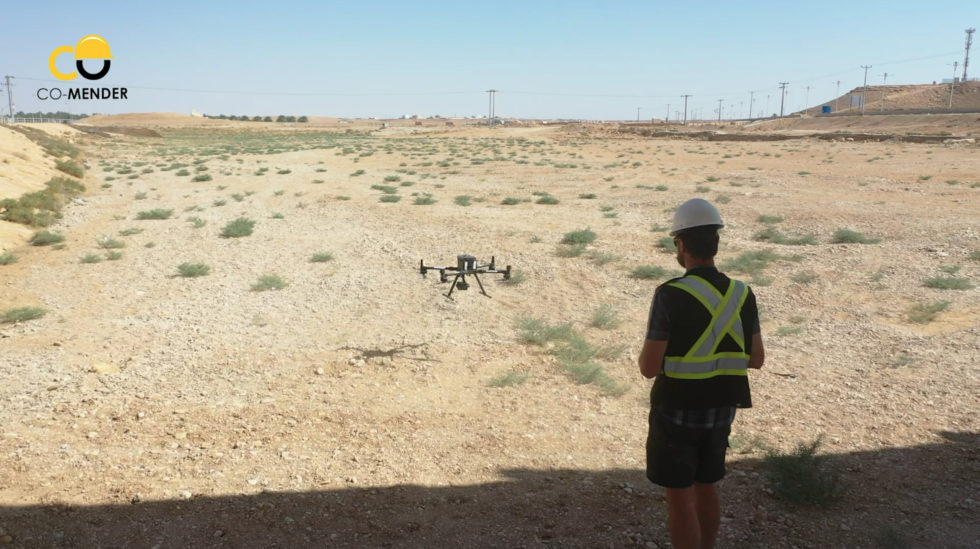At InDro Robotics, it’s fair to say we receive inquiries from all over the world.
Some inquiries are about our R&D, and whether we might create a solution for a client’s problem. Others are about InDro’s many services – ranging from training and certification to hands-on service provision. And sometimes, companies simply want to tap into our expertise, to see if we can help them out with a job.
We don’t say that to brag, but to help explain how and why our own Dr. Eric Saczuk happened to recently be flying drone missions in Saudi Arabia. One more bit of background: Eric is an expert when it comes to drones and data capturing and interpretation. He has a PhD in Remote Sensing and – in addition to working for InDro Robotics – is also head of the RPAS (drone) Hub at the BC Institute of Technology.
That’s why Eric is one of our “go-to” pilots when it comes to complex data acquisition missions. He travels a lot – but why this trip to Saudi Arabia?
“I went to essentially help a company develop their drone inspection and survey program,” he explains. The company (Co-Mender, which specializes in concrete infrastructure inspection and repair) had purchased a DJI M300 from Canada and hadn’t flown it yet. The firm also had a couple of critical inspections they wanted to get done ASAP.
So Eric hopped on a jet, and 17 hours later arrived somewhere decidedly less green than his home base of Vancouver. He took this snap while on the trip:
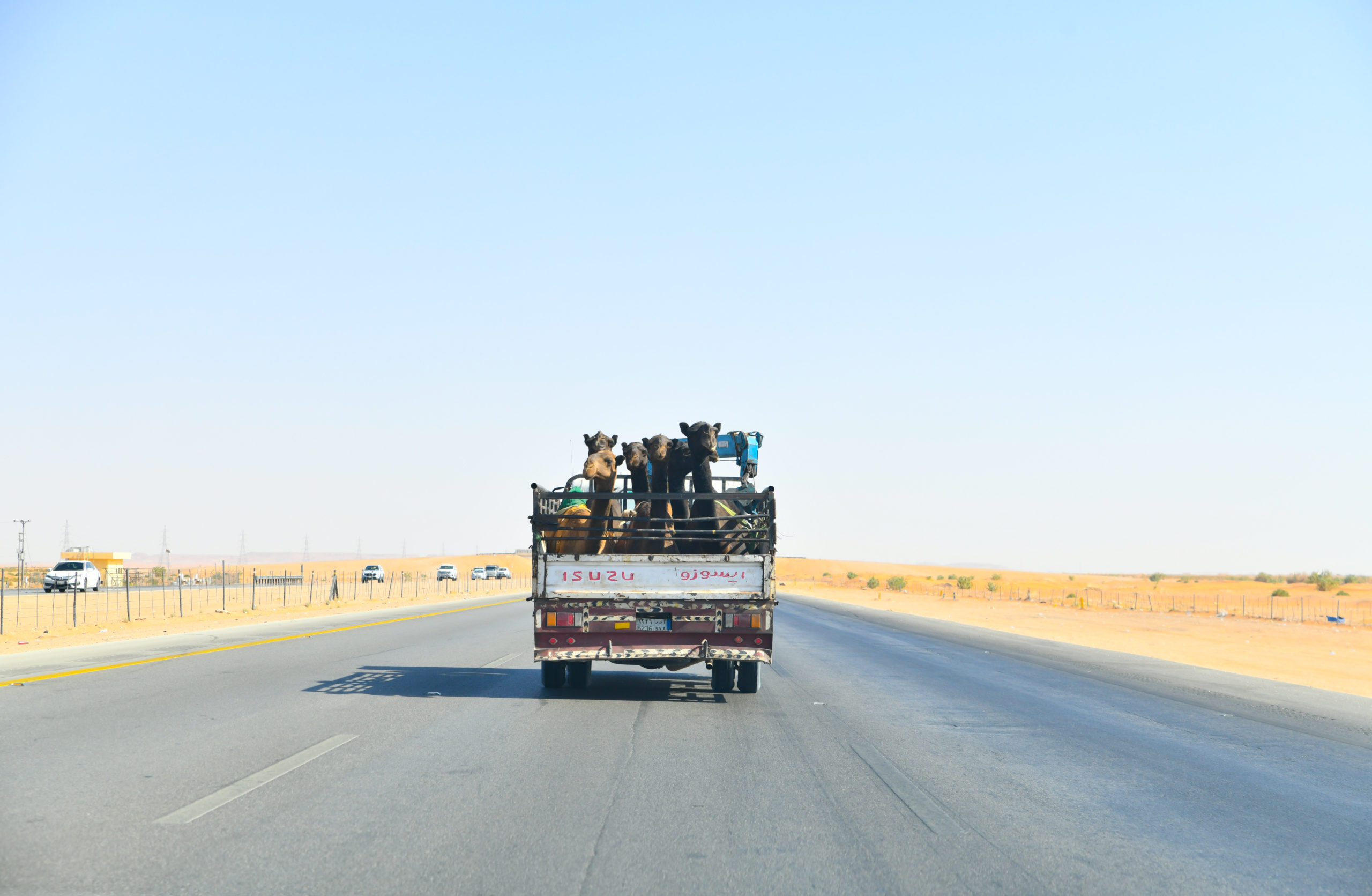
Getting the drone to fly…
Normally, this is the easy part. You set up the machine, ensure the firmware is updated, do a physical inspection, check that all permissions have been obtained and that it’s generally safe to proceed. (There are other steps, but you get the drift.) Except in this case, there was a problem – even though it was a brand new enterprise drone that had never been flown.
They turned it on, and, well, nothing.
“Their drone was actually region-locked to North America, so there was no way it would turn on in Saudi Arabia. So the first order of business was to figure out how to unlock it. As soon as the drone turned on it was saying ‘I’m in Saudia Arabia, I’m not supposed to be here. I will not turn on.'” (Well, it wasn’t literally saying that, but that was the gist of the message popping up on the controller.)
The clients, of course, were concerned. Their brand-new drone wasn’t working and they had time-sensitive jobs to do. So Eric set to work.
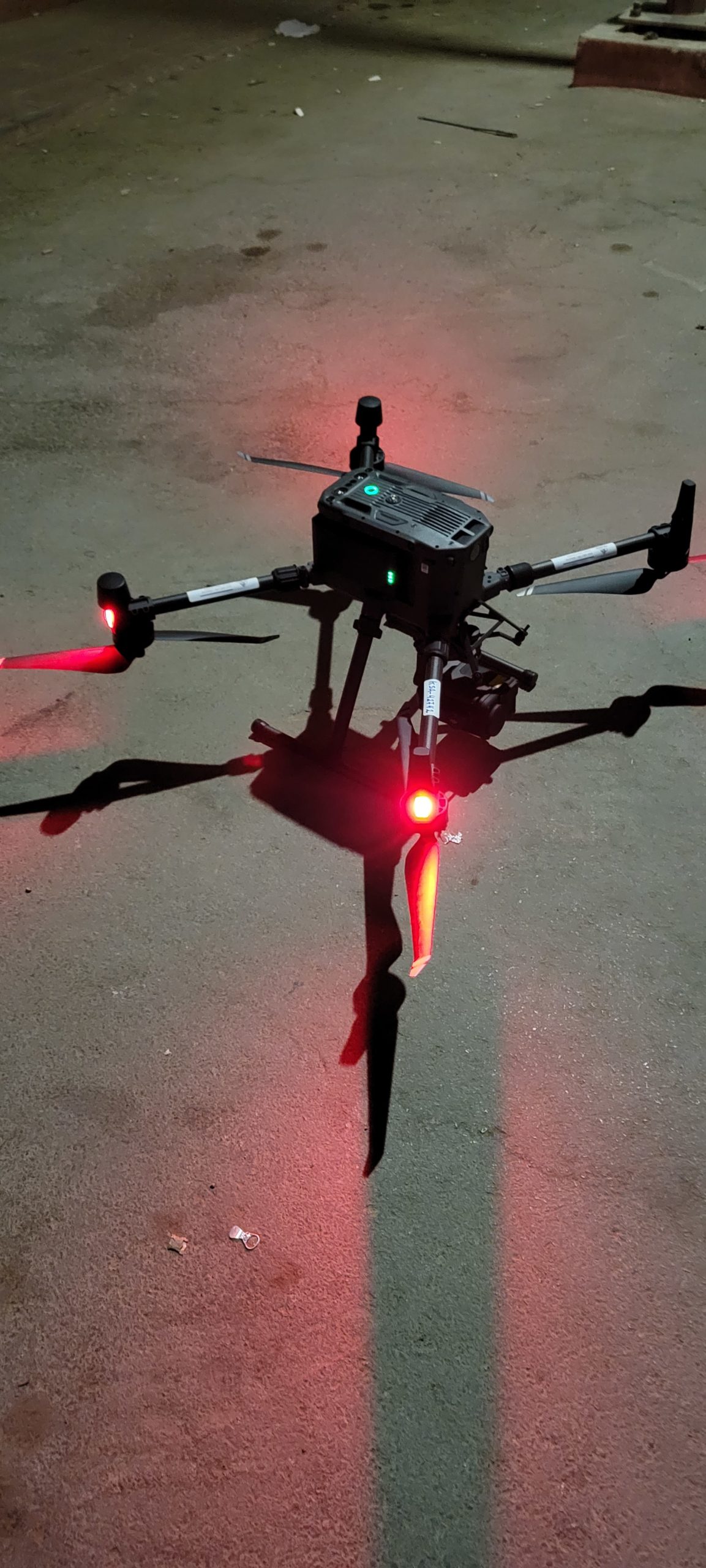
The path to a solution
After trying everything he could think of related to firmware hacks, Eric contacted InDro’s engineering team and reached out to DJI’s Enterprise side for support. While waiting for some a workaround and not one to waste time, Eric borrowed a DJI Mavic Air 2 from a company hired to create video content about the projects. This allowed for the capture of preliminary photogrammetry of the bridge. Eric also took ground-based DSLR photos from the ground, shooting upward to capture the underside of the bridge.
Drone photos are all geo-referenced, meaning they contain metadata that places the photo in 3-D space at a specific time. But, with rare exceptions, DSLR images do not contain that kind of data. So how would these images be integrated? Well, the photogrammetry software is capable of picking out common features in any kind of imagery, whether aerial or terrestrial. So once it understood what a certain pillar looked like, for example, the software integrated those DSLR photos and a rough 3D digital twin could be created.
But the project required an accurate digital model, which mean that they still needed that M300 to fly. Finally, says Eric, the answer came from DJI support.
“Within two days, we had a solution from DJI to apply for a geo-unlock prior to each flight,” he explains. “It was not ideal, but it allowed us to get the jobs done.”
Several days later, Eric began re-flying the bridge mission, using the M300 to capture the structure from all angles (including from below, with the gimbal tilted upward). There were issues with dust, as the M300 kicked up a fair bit when flying beneath the low bridge. In fact, Eric had to pause the mission from time to time to wipe the lens clean.
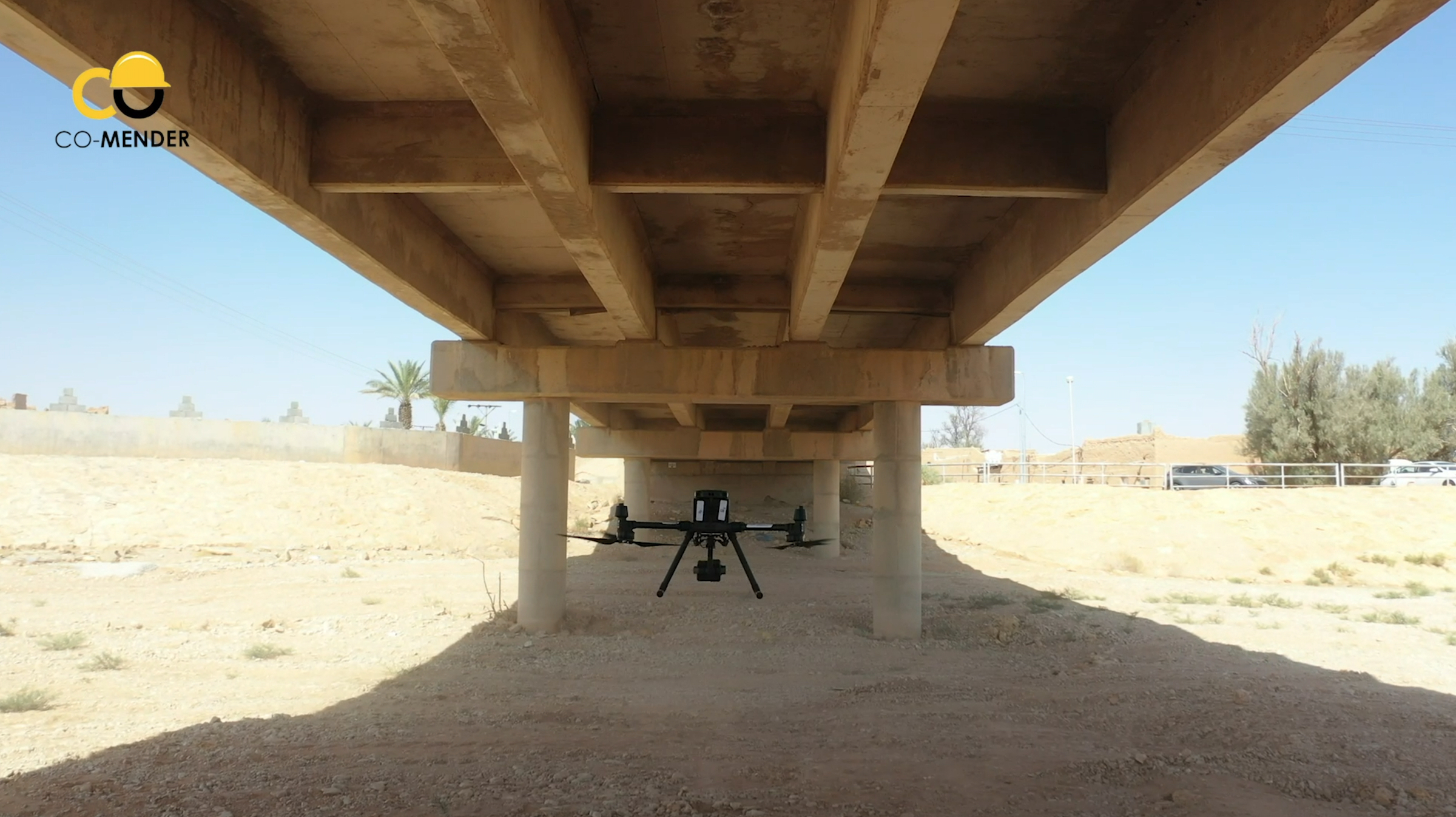
M300 back in action
With the M300 back in action, Eric was able to proceed with the mission with the ultimate goal of producing a complete digital twin of the bridge (a 3D digital reconstruction of the physical site, which is very useful for inspection purposes). Engineers use these digital twins to look at the asset and inspect it from all angles. If they find areas of concern, seeing the high-res images associated with that spot are just a few clicks away. In this case, the firm was attempting to determine whether the bridge should be repaired or replaced.
Then it was on to the next mission.
“The other site was about 50 kilometres southeast of the mountainous town of Al-Bahah. Here, the team was dealing with a dangerous 80-metre high rock cliff adjacent to a recently twinned highway,” explains Eric. “They were quite concerned about the high risk of rock fall activity and needed to engineer mitigative structures to stabilize the slope. In order to proceed, they needed detailed contours so their engineering team could design these structures.”
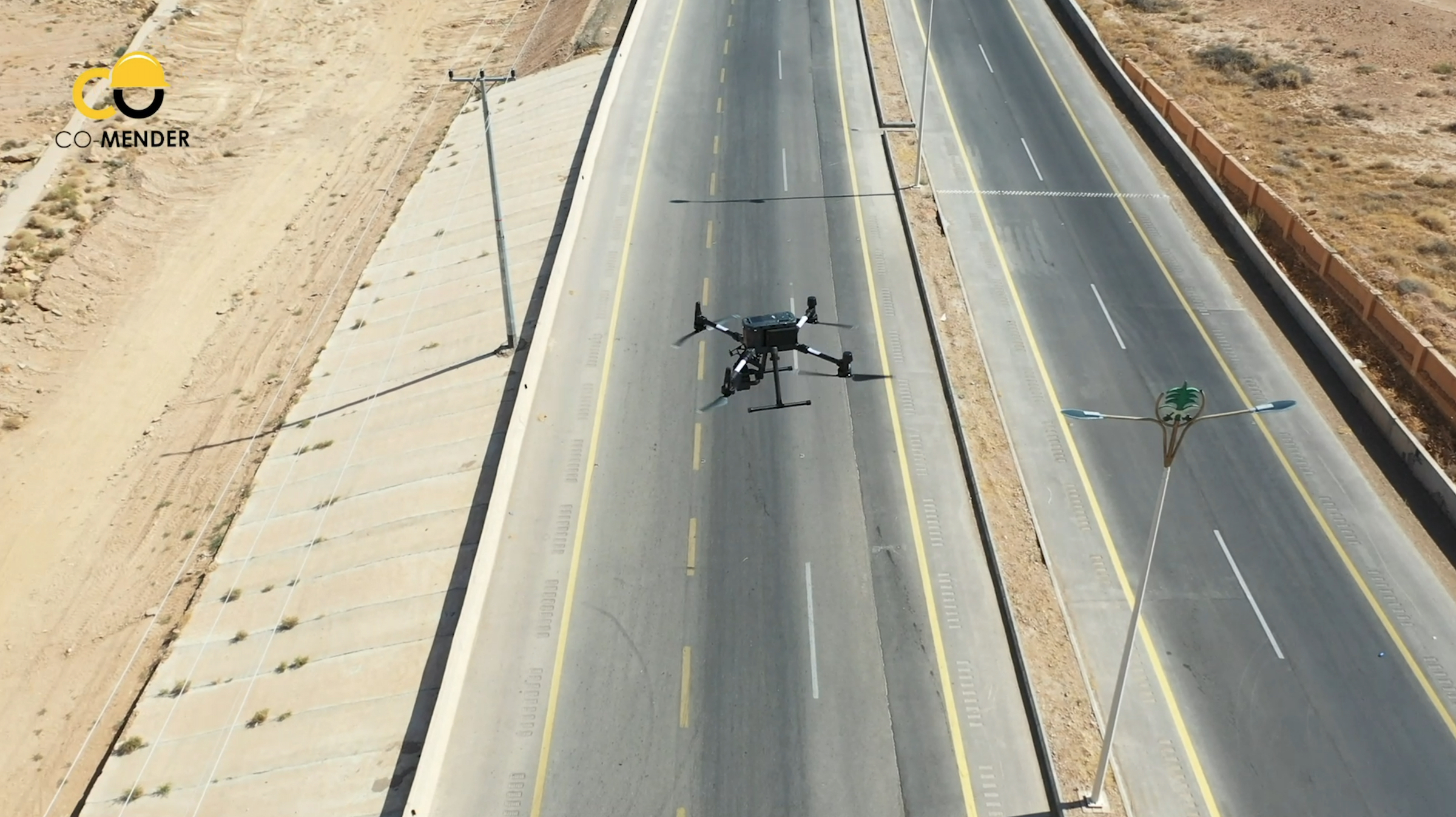
If only there was a video…
Words and photos are nice, but sometimes a video can really give you a better sense of the job. Thankfully, Co-Mender pulled one together and has given us permission to share it. You’ll get a glimpse of the work InDro’s Dr. Saczuk carried out:
So, how did it go?
According to Eric, very well. Putting an enterprise drone to work, in conjunction with an excellent ground crew and reliable photogrammetry software, produced impressive results.
“I think ultimately it was quite shocking for the client: To be able to fly the drone for a couple of hours to collect the imagery, and within 24 hours deliver to them accurate contours. That was something they had never had access to before on that short of a timeline and that level of accuracy. To have surveyed that slope manually and generate contours would have taken probably taken two weeks.”

‘A memorable trip
Eric says he met a really great team at Co-Mender and Gulf Crete (the support company), including one engineer who wanted to soak up as much knowledge as humanly possible during his stay. Eric also really enjoyed experiencing Saudi Arabia for the first time.
“I was quite keen on experiencing the culture – and I’m glad I did. I met incredibly friendly people and saw such diversity – everything from 400-year-old villages to a theme park that was like New York/Vegas.”
Eric also sends a ‘Thank You’ to Ian Wills, the President of Coastal Drone Co. It was Ian who connected the client with InDro Robotics.
InDro’s View
We are pleased with the outcome of this trip – simply because the client was happy. We perhaps don’t advertise these services as much as we should, but InDro has a full team of engineers and expert pilots (both of drones and Uncrewed Ground Vehicles), who are happy to help with solutions and training pretty much anywhere on the planet.
“A lot of foundations at InDro are based on providing unique and specialized training and solutions for clients,” says Eric. “And there have already been discussions on how we now take that to an even greater scale.”
If you have a problem…we’d love to help you solve it. Get in touch here.

